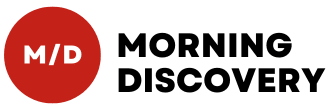Don’t Miss Out on These Higher Interest Rates for Your Savings Account
Published on
16 minute read

Are you tired of your hard-earned savings sitting idle? A 5% interest rate on your savings account could be a game-changer. This blog post will guide you through the best high-yield savings accounts offering jaw-dropping rates.
Earn more from your money, starting today.
Key Takeaways
- High – yield savings accounts offer much higher annual percentage yields (APYs) ranging from 3% to 6%, compared to traditional savings accounts yielding around 0.01% APY.
- In 2024, several banks such as Laurel Road, Milli, M1, Bask, UFB Direct, and Salem Five Direct offer competitive high-yield savings accounts with APYs around 5%.
- To maximize APY on savings, compare high-yield accounts from different banks, maintain higher balances to qualify for tiered rates, automate transfers from checking, and consider opening multiple high-rate accounts.
- High – yield savings accounts are insured by government agencies like the Federal Deposit Insurance Corporation (FDIC) and the National Credit Union Administration (NCUA), protecting deposits up to $250,000 per depositor, per bank.
- When choosing a high – yield savings account, compare APYs, fees, minimum balance requirements, withdrawal limits, online banking capabilities, and the bank’s financial stability.
Understanding High-Interest Savings Accounts
A high-interest savings account offers a higher annual percentage yield (APY) than a standard savings account. The APY represents the amount of interest earned on your deposit each year.
Banks and credit unions compete for your savings by offering attractive APYs. Explore top options to secure the best rate for your money.

What is a High-Interest Savings Account?
A high-interest savings account offers a higher annual percentage yield (APY) than traditional savings accounts. These accounts allow depositors to earn significantly more interest on their funds.
High-yield savings accounts often provide APYs ranging from 3% to 6%, which is 10 to 20 times higher than the national average for regular savings accounts.
Financial institutions like online banks and credit unions offer high-interest savings accounts. These accounts function similarly to regular savings accounts but with higher interest rates.
How Does a High-Interest Savings Account Work?
High-interest savings accounts allow you to earn a higher annual percentage yield (APY) on your deposits. Banks pay you interest on the money you keep in these accounts. The APY determines how much interest accrues over a year.
Your balance grows faster due to compounding, where interest gets added to your principal amount. When the Federal Reserve raises interest rates, some banks increase the APY on high-yield savings accounts.
High-yield savings accounts operate like regular savings vehicles from banks and credit unions. You can deposit and withdraw funds easily. The key difference lies in the higher interest rates offered.
The Appeal of a 5% Interest Savings Account
A 5% interest savings account offers an enticing opportunity to grow your savings faster. It’s a smart choice for savers seeking higher returns on their hard-earned money.
The Benefits of a 5% Interest Savings Account
A 5% interest savings account rewards you handsomely. It offers significantly higher returns compared to ordinary savings accounts yielding around 0.01% APY. With a 5% APY, your money compounds faster, accelerating growth.
Compound interest amplifies gains over time by reinvesting earnings.
A premier 5% interest rate outpaces inflation and most investments. It preserves your buying power while providing solid returns. These high-yield accounts help you achieve financial goals quicker, whether building an emergency fund or saving for major purchases.

How to Get a 5% Interest on Savings?
Earning a 5% interest rate on your savings is achievable. Here are the steps:
- Compare high – yield savings accounts online. Browse through interest rates offered by banks and financial institutions.
- Check account requirements carefully:
- Some accounts need a minimum initial deposit.
- Others require maintaining a specific minimum balance.
- Look for accounts with low or no monthly fees.
- Open an account with a bank offering a 5% APY:
- Milli Savings Account currently offers 5% APY.
- Betterment Cash Reserve provides 4.45% APY.
- Newtek Bank High Yield Savings gives 5.25% APY.
- Set up automatic transfers from your checking to the high-yield account. Regularly contribute to grow your savings.
- Monitor rates periodically. Banks adjust APYs based on market conditions. Switch accounts if rates become uncompetitive.
- Avoid withdrawing frequently, as some accounts limit free withdrawals per month.
- Ensure deposits remain within FDIC or NCUA insurance limits for maximum coverage.
Following these steps can help maximize your savings growth with a competitive 5% annual percentage yield.
Presenting the Best 5% Interest Savings Accounts of 2024
In 2024, several banks offer high-yield savings accounts with a 5% annual percentage yield (APY). Laurel Road, Milli, M1, Bask, UFB Direct, and Salem Five Direct provide competitive interest rates.
The following tools are available:
– Federally insured online banks like Bread Savings and BMO Alto
– National banks like CIT Bank and Varo Bank
– Credit unions like Digital Federal Credit Union
Laurel Road High Yield Savings® account
Laurel Road’s High Yield Savings® account stands out with one of the highest APYs at 5.00%. It requires no minimum balance and charges zero monthly fees. This FDIC-insured savings account offers a simple way to grow your money faster.
For existing Laurel Road members, special high-yield savings rates are available. The easy online access and user-friendly digital experience make managing your high-interest account convenient.
Laurel Road’s competitive rates, straightforward terms, and secure FDIC insurance position its High Yield Savings® account as a top choice.
Milli Savings Account
Milli Savings Account offers a competitive 4.75% Annual Percentage Yield (APY). It requires no minimum opening deposit and minimal fees. You can manage the account through a user-friendly mobile app.
NerdWallet recommends Milli for its high interest rates and excellent customer service.
The account earns 5.10% APY with no monthly fees or minimum balance requirements. However, you need to fund the account initially. Milli Bank receives positive reviews for providing high-yield savings with competitive rates.
M1 High-Yield Savings Account
M1 High-Yield Savings Account offers a remarkable 5.00% annual percentage yield (APY) for M1 Plus members. The account provides Federal Deposit Insurance Corporation (FDIC) coverage, ensuring your savings remain secure.
Non-members can still benefit from a competitive 1.50% APY on their High-Yield Savings Account.
This savings product from M1 stands out among the best 5% interest savings accounts of 2024. Its impressive interest rate outshines many competitors, making it an attractive option for individuals seeking to grow their savings.
Bask Interest Savings Account
Bask Bank provides an interest savings account. It offers competitive rates compared to other high-yield savings accounts. Bask Bank’s savings account interest rates are among the highest available.
Bask Bank offers a savings account that earns interest. It also offers another savings account that earns American Airlines miles instead of interest. Additionally, Bask Bank provides four certificate of deposit (CD) terms.
In April 2024, Bask Bank ranked among the top 5% interest savings accounts. Customers have the opportunity to earn more from their savings with Bask Bank’s high interest rates.
UFB Secure Savings
UFB Secure Savings offers a high-yield savings account with up to a 5.25% annual percentage yield (APY) on all balances. This competitive APY helps customers grow their savings faster through compound interest.
The account charges no maintenance fees or service fees, and requires no minimum balance. NerdWallet recommends UFB Direct as a top savings account option for April 2024.
UFB Direct’s high-yield savings account provides security by being federally insured. It’s an attractive choice for people seeking to earn 5% APY or higher on their deposit accounts.
Salem Five Direct eOne Savings
Salem Five Direct eOne Savings offers a competitive 5.01% Annual Percentage Yield (APY) on daily balances up to $1,000,000. Opening this high-yield savings account requires just a $10 minimum deposit with no monthly fees.
There’s no minimum balance requirement, and it grants access to Salem Five Direct’s online banking services.
This eOne Savings account stands out as one of 2024’s top 5% interest savings options. It provides an attractive yield across all balance levels up to $1 million. To qualify, the funds deposited must be new to Salem Five Direct.
Honorable Mentions
Some other top high-interest savings accounts worth considering include BMO Alto Online Savings Account, Bread Savings High-Yield Savings Account, and CIT Bank Platinum Savings. Varo Savings Account also offers decent interest rates.
BMO Alto Online Savings Account
BMO Alto Online Savings Account offers a 5.10% Annual Percentage Yield (APY). It charges no monthly fees and requires no minimum balance. Users praise BMO’s online portal and seamless account experience.
This online-only high-yield savings account earns higher interest than traditional savings accounts (0.01% APY). BMO Alto also offers competitive Certificate of Deposit (CD) rates without monthly fees.
The low-maintenance account maximizes savings effortlessly. Access occurs through online banking with no app needed.
This high-interest savings vehicle trumps typical bank account yields. It provides superior earnings potential while maintaining liquidity. The digital platform streamlines money management for customers seeking top returns.
Linking external accounts facilitates easy transfers and deposits. User reviews highlight BMO’s intuitive interface and reliable customer service. Alto fits varied financial profiles – from casual savers to aggressive wealth-builders.
Bread Savings High-Yield Savings Account
The Bread Savings High-Yield Savings Account offers a competitive 5.15% annual percentage yield (APY). It accrues interest daily and compounds it for maximum growth. This account has no hidden fees or monthly maintenance charges.
The deposits in this high-yield savings product grow rapidly, thanks to the top-tier market rates. Bread Financial also provides certificates of deposit (CDs) with enticing APYs. However, remember that rates may fluctuate over time since they are variable.
CIT Bank Platinum Savings
CIT Bank offers a Platinum Savings account with a competitive 5.05% APY for balances of at least $5,000. It has no monthly charges, making it an attractive option for those seeking high returns on their savings.
CIT Bank is an FDIC-insured online bank providing customers with secure banking services.
This high-yield savings account allows you to earn substantial interest income without minimum balance requirements or fees. The account provides mobile and online access for easy money management.
Varo Savings Account
Varo Savings Account offers an introductory 3.00% APY. It helps customers grow money fast. Varo Bank provides one of the highest savings rates compared to traditional banks.
Varo High-Yield Savings Account is packed with benefits. It helps reach financial goals. Varo pays 5.00% APY on balances up to $5,000. Account holders receive at least $1,000 in direct deposits and maintain a balance.
Varo Savings Account offers a competitive APY without monthly fees. Varo Bank’s online savings account earns more, saves automatically, and automates savings goals. Customers save more, earn more, and grow savings fast with Varo’s high savings rates.
How to Choose a 5% Interest Savings Account
You want the best rate.
When selecting a 5% interest savings account:
- Compare annual percentage yields (APYs) across banks and online options.
- Look for accounts with no monthly fees or minimum balance requirements.
- Verify the bank’s membership status with the Federal Deposit Insurance Corporation (FDIC).
- Consider ease of access like mobile apps and ATM networks.
- Check account features like automatic transfers and interest compounding.
- Evaluate customer service ratings and online banking capabilities.
- Understand withdrawal limits and any other account restrictions.
- Opt for accounts that allow linking to checking for easy transfers.
- Pick an account that aligns with your savings goals and timeline.
- Prioritize banks with a strong history and financial stability.
Applying for a High-Interest Savings Account
Opening a high-interest savings account is easy. Applicants complete an online form.
- Gather required documents – government-issued ID, Social Security number, and existing bank account details.
- Review eligibility criteria – some accounts require minimum opening deposits or balances.
- Provide personal and contact information accurately.
- Link an existing checking account for transferring funds.
- Fund the new account via electronic transfer or mobile check deposit.
- Activate the account once approved.
- Set up online access and track the higher APY accruing.
- Monitor statements for accuracy.
Key tips:
- Compare APYs, fees, and requirements across providers.
- Ensure the account is FDIC or NCUA insured.
- Understand withdrawal limits or penalties.
- Maintain qualifying balances for the highest rates.
- Avoid accounts with high maintenance costs or hidden fees.
- Consider linking to existing accounts for easy transfers.
Alternatives to 5% Savings Accounts
If traditional bank savings accounts don’t meet your expectations, explore higher-yield options. Money market accounts, certificates of deposit (CDs), credit unions, and online banks often provide better rates.
Some offer yields exceeding 5% APY. Research and compare to find the right fit for your goals.
Maximize returns by diversifying across savings vehicles. For instance, consider allocating funds to high-interest savings accounts for liquidity, CDs for fixed terms, and money market funds or accounts for check-writing privileges.
Laddering CD maturities can ensure continuous access to competitive rates. Regularly review and rebalance for optimal growth.

Maximizing APY on Savings
To maximize annual percentage yield (APY) on savings, compare high-yield accounts from different banks. Many online banks offer competitive APYs over 3% on standard savings accounts.
However, some provide tiered rates – higher balances earn better yields, often 4-5% APY. Consistently monitor rates as banks frequently adjust APYs based on market conditions. Additionally, look for accounts without monthly fees that could diminish earnings.
Maintaining higher balances in high-yield accounts enables you to capitalize on the best yields. For instance, Salem Five Direct eOne Savings offers 4.5% APY for balances over $100,000.
Automating transfers from checking into savings streamlines this strategy. Avoid withdrawals that reduce balances below tier requirements. Finally, consider opening multiple high-rate accounts to maximize total interest earned across your savings.
The Safety of High-Yield Savings Accounts
Security is paramount when selecting a high-yield savings account. Fortunately, these accounts are insured by government agencies. The Federal Deposit Insurance Corporation (FDIC) protects funds up to $250,000 per depositor, per bank.
Similarly, the National Credit Union Administration (NCUA) safeguards savings at credit unions. This coverage shields your money from institutional failure.
High-yield accounts are typically lower-risk options compared to investing directly in stocks or other volatile assets. Banks and credit unions are legally required to maintain cash reserves and follow lending regulations.
These rules mitigate risks associated with traditional financial institutions. While returns may be lower than aggressive investments, high-yield savings provide reliable growth with minimal volatility.
Comparing High-Yield Savings Accounts
High-yield savings accounts differ from money market accounts, certificates of deposit (CDs), and checking accounts. Know the differences to pick the best option. Keep reading to learn more.
High-Yield Savings Account vs Money Market Account
High-yield savings accounts and money market accounts provide competitive interest rates. They help grow savings faster than regular accounts. Yet, there are key differences. Money market accounts often require higher minimum balances.
But they allow check-writing and debit card access. High-yield savings accounts have fewer withdrawal options. However, their interest rates are generally higher.
Money market accounts and high-yield savings accounts are FDIC-insured up to legal limits. This means your deposits are secure if the bank fails. Both account types let you earn interest on your savings.
High-Yield Savings Account vs Certificate of Deposit (CD)
High-yield savings accounts offer easy access to funds. Certificates of deposit (CDs) restrict withdrawals until maturity. CDs generally provide higher interest rates compared to savings accounts.
However, savings accounts are more liquid.
Your choice depends on priorities – accessibility or higher returns. Savings accounts suit short-term goals requiring quick cash. CDs cater to long-term investing by locking money for fixed periods at higher annual percentage yields (APYs).
High-Yield Savings Account vs Checking Account
Checking accounts allow easy access to funds. However, they offer minimal interest rates. High-yield savings accounts pay significantly higher annual percentage yields (APYs). This enables faster money growth compared to checking accounts.
FDIC or NCUA insures high-yield savings for deposit safety.
Checking accounts charge fees for services like overdrafts or wire transfers. Many high-yield savings accounts have no monthly maintenance fees. Some even refund ATM surcharges. This boosts overall earnings from the higher APY.
Understanding Savings Account Fees
Low-interest earnings and high fees can significantly diminish your savings account balance. Many banks charge monthly maintenance fees ranging from $5 to $25, even on high-yield accounts.
Additional fees like overdraft charges, wire transfer costs, and excessive withdrawal penalties also eat into your returns. Before opening an account, scrutinize the fee schedule to identify potential drains on your hard-earned money.
High-yield savings accounts usually carry fewer fees than traditional accounts. However, some online banks impose monthly service charges if you don’t meet minimum balance requirements or lack qualifying activities like direct deposits.
Avoiding these gotchas by reading the fine print can help maximize your annual percentage yield (APY). Regularly reviewing your statements for unexpected charges is also advisable to protect your nest egg from unnecessary erosion.
Pros and Cons of High-Yield Savings Accounts
High-yield savings accounts offer better returns. They give higher interest rates than normal accounts. However, they often have balance requirements. They may also limit withdrawals and transfers.
High-Yield Savings Account Pros
High-yield savings accounts offer several benefits. They provide an excellent rate of return on your savings. High-interest rates allow your money to grow faster than traditional savings accounts.
- Higher interest earnings
- Yields like 5% APY help maximize returns on your cash reserves.
- The increased interest income compounds over time.
- Federally insured deposits
- Funds are secured by FDIC insurance up to $250,000 per depositor.
- Your savings remain protected in FDIC – insured banks or credit unions.
- Easy access to funds
- High – yield savings are liquid accounts allowing withdrawals.
- You can transfer money in and out without penalties.
- Low fees or no fees
- Many online high – yield accounts have minimal or no monthly fees.
- You avoid excessive charges eating into your earnings.
- Online banking convenience
- Access accounts through mobile apps and websites.
- Easily transfer funds and monitor balances digitally.
- Separate from checking
- Keeps your savings isolated from spending money.
- Reduces temptation to dip into savings unnecessarily.
- Automatic savings tools
- Set up recurring transfers to build savings consistently.
- Apps monitor income and transfer excess funds automatically.
High-Yield Savings Account Cons
High-yield savings accounts offer attractive interest rates. However, some potential downsides exist:
- Variable Rates: Interest rates on high-yield savings accounts fluctuate frequently. A financial institution can lower the Annual Percentage Yield (APY) at any time, reducing your earnings.
- Low Initial Deposit Requirements: While appealing, low minimum deposit amounts may tempt you to open multiple accounts, making tracking and managing funds challenging.
- Limited Access: Accessing funds from high-yield savings accounts may involve waiting periods or restrictions on withdrawals. This could impact liquidity during emergencies.
- Limited Services: High-yield savings accounts typically lack robust features like checking accounts or money market accounts. You may need to maintain separate accounts for different purposes.
- Potential Fees: Some institutions charge maintenance fees, reducing your overall earnings. Always review fee schedules carefully.
- Federal Insurance Limits: Deposits exceeding Federal Deposit Insurance Corporation (FDIC) limits may not be fully insured if the bank fails.
- Tax Implications: Interest earned on savings accounts is considered taxable income, potentially increasing your tax liability.
- Opportunity Cost: Investing in higher-risk, higher-return options like stocks or bonds could yield better long-term growth than savings accounts.
- Inflation Erosion: If inflation rates surpass the interest earned, the purchasing power of your savings diminishes over time.
- Risk of Bank Failure: Although rare, if a bank becomes insolvent, accessing your funds may become problematic until the FDIC intervenes.
Conclusion
Individuals have an excellent opportunity to maximize their savings potential. High-yield accounts provide a lucrative interest rate, often exceeding 5%. Seize this chance to grow your money effortlessly.
Compare top offerings diligently and choose the account suiting your needs. Embrace the rising rates environment and watch your wealth accumulate steadily.
For more financial tips and tricks, check out our guide on getting a credit card with no credit check in 2024.
FAQs
1. What is an APY (Annual Percentage Yield)?
APY or Annual Percentage Yield is the interest rate earned on savings account rates, taking into account compounding periods.
2. Are my deposits insured if I open a savings account?
Yes, deposits in savings accounts at banks that are FDIC (Federal Deposit Insurance Corp.) members are insured up to $250,000 per depositor.
3. Can I access my savings account through ATMs or mobile banking?
Many banks offer ATM access and mobile banking apps to easily manage your savings account, check balances, and make qualifying deposits.
4. Do high-yield savings accounts charge ATM fees or other transaction fees?
Some high APY savings accounts may charge ATM fees for using non-network ATMs or other transaction fees, so check the bank’s fee schedule.
5. How can opening a high-interest savings account impact my credit score?
Opening a new savings account typically does not directly impact your credit score, but good financial habits like saving can indirectly help build your credit scores over time.
6. What other banking products are offered besides savings accounts?
In addition to savings accounts, banks may offer checking accounts, credit cards, personal loans, mortgages and other financial products insured by the FDIC.
Source Links
- https://www.forbes.com/advisor/banking/savings/best-5-percent-interest-savings-accounts
- https://www.cnbc.com/2023/05/15/how-savers-can-benefit-from-higher-interest-rates.html
- https://www.nerdwallet.com/article/banking/what-the-fed-rate-increase-means-for-savings-accounts
- https://www.bankrate.com/banking/savings/how-to-get-the-best-savings-account-rate
- https://www.cnbc.com/2023/11/03/wealth-management-expert-no-1-myth-about-high-yield-savings-accounts.html
- https://www.experian.com/blogs/ask-experian/what-rising-interest-rates-mean-for-your-savings
- https://www.marketwatch.com/picks/5-things-you-should-never-do-with-your-savings-18366c78





